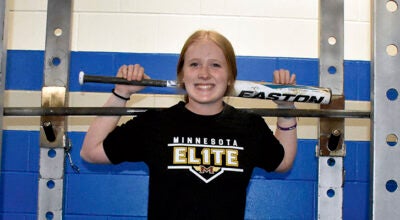Riege: Lead-core for spring walleyes
Published 8:26 pm Tuesday, April 2, 2013
I slipped the 15 horsepower Merc. in gear and started to let out line until it ticked bottom. When the bottom started to pull at my lure I cranked in a couple of turns and sat back to troll a contour around a point that seemed to have fish congregated on it. The cool air of spring and the maddening songs of the spring birds were interrupted by a sharp pull and a bend in my rod. I quickly pushed the Merc. into neutral and started to crank in a nice 6 lb. walleye. I knew that those fish were just off the point but with fifteen feet of water conventional trolling techniques had to be modified. That is when I decided to go for the leadcore.
Lead lining isn’t all that complicated. But like any kind of fishing, getting good at it takes a certain knack and amount of time. Basically, it requires a stiff pole, a large reel, and the lead line. Rods vary from angler to angler. They once resembled short telephone poles with guides; some even had pulleys on the tip instead of a regular tip. Now rods are similar to what anglers use for northern or musky fishing. Lately the rods have increased in length and today I use the Shimano Talora Series rods in the 7’0” length to get the lures away from the boat and yet have the sensitivity of a smaller walleye rod. Some anglers prefer the cork handles while others prefer the foam handles. I like to use the cork handles, but rod holders have a tendency to cut the cork handles. So, many anglers put one rod in the rod hold and holder the other under their arms like a knight that is ready to joust.
A good level wind Shimano Calcutta 400 or 700 reel is essential to hold the large capacity of leadcore line. Reels that look like a smaller version of saltwater reels that used for marlin fishing are ideal. These reels have a good drag system and the line comes off smoothly because the line doesn’t have a chance to twist or tangle.
Line, the key to the fishing, comes in large spools and in some circumstances there are double spools that are one continuous leadcore spool. Most anglers will spool up about 300 feet of line on one reel. The line is color-coded, a different color for every 10 yards, so anglers can tell how much line they have out. The line is so stiff that if you put a kink in it and hold it up, the kink stays. If you twist leadcore line around your finger and remove the finger the coil will remain.
Therefore, lead line is tipped with a mono leader, usually about 15 pound test. Some anglers prefer shorter leaders; others may go as long as 35 feet. Longer leaders are braided into the line so that there is no knot to stop the line from being reeled onto the spool.
The lure of choice for many anglers is the shad imitation bait. They are long and skinny like the original Rapala or short and fat like the Shad Rap. If you are fishing with leadcore, just like fishing with monofilament line. you should choose the bait that matches the prey that the walleyes are feeding on.
The presentation of this lure with leadcore is forward trolling letting out line until it reaches the bottom and then cranking in about three turns so the lure rides right off the bottom. Anglers avoid losing lures by watching their depthfinders closely. They are skilled enough to keep the motor at a certain speed and can tell just about where the lure is in relation to the bottom.
There is a disadvantage to using leadcore line; there is no way to get rid of the weight once the fish strike. Plus there is no give in the line, so once the fish is hooked if you are going to land the fish you have to keep steady pressure on the line. No pumping or providing slack, because as soon as the fish has a little slack they will spit the lure.
Traditionally, that is the way that leadcore was fished in a few places in the upper Midwest. Today, more anglers are using leadcore than ever before, but they are using it as an inline weight system rather than having all the lead and weight of some spooled up 300 feet of line. Now they use it to segment the line and provide additional weight to monofilament.
The length of the leadcore segment varies by the type of crankbait you’ll be using and the depth you need to achieve. For example, in the late springs chilly water, I’ve found walleyes to prefer subtle action lures like a # 7 Shad Rap. To get this shallow-diving bait down 30 to 40 feet you need three segments of leadcore. If you’re using a deeper diver like a #9 Shad Rap you can achieve the same depths with just two segments of leadcore. The general rule is high action crankbaits for warm water, subtle action for cool water.
When you find a concentration of fish in over 40 feet of water and they are suspended at 30 feet, start from the bottom and work your bait up to the strike zone. Most anglers would try to determine how much line to let out until they are in 30 feet of water. The easiest method is to let out line until you are on the bottom and then crank in line until you have a strike.
So this spring when the fish move a little deeper and you can’t get to them with the traditional methods pick up some leadcore and hit the water. Hope to see you getting the lead out this year for those walleyes.





